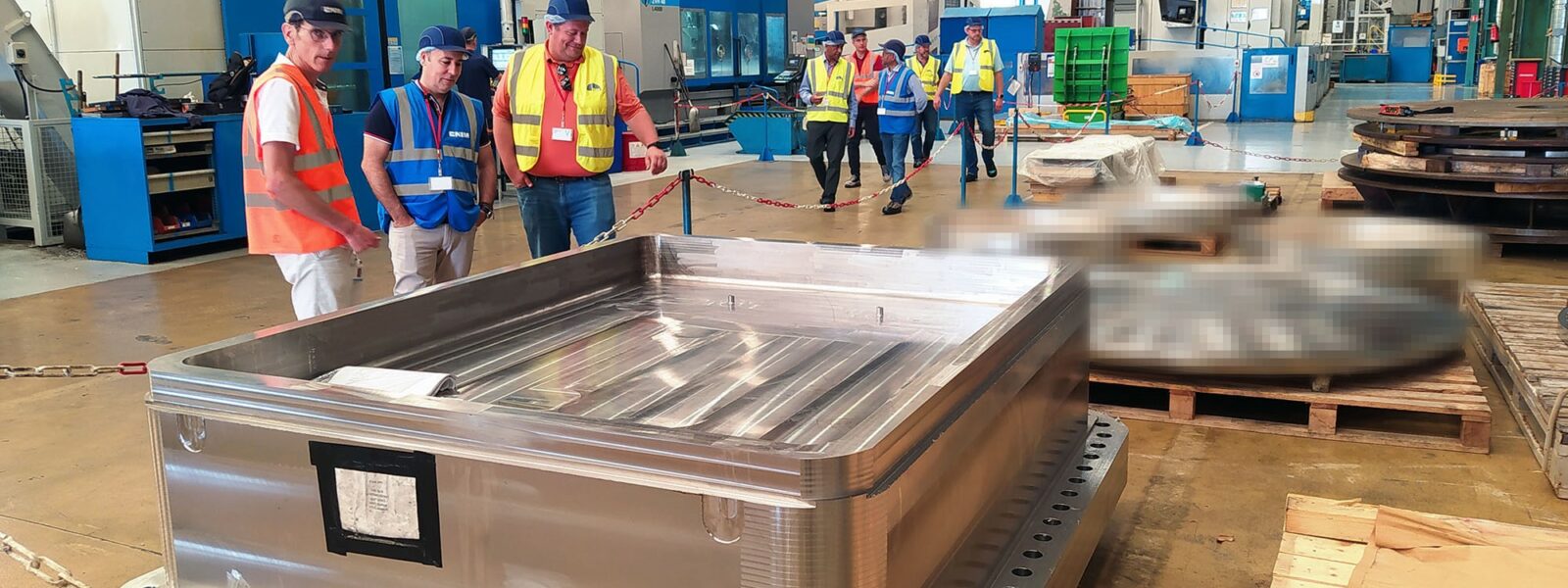The first two diagnostic port plug structures will be sent to ITER Domestic Agencies to be equipped with diagnostics and other hardware.
To an outside observer, port plug structures look like hollow boxes about the size of a bus. But when fully equipped, those boxes will hold diagnostics, integrated services, and other hardware. While the port plug structures are made with ITER-grade austenitic stainless steel to withstand neutrons fluxes and other hazards, the equipment inside will be shielded with steel and boron carbide to provide an extra layer of protection.
Two standard types of port plugs are planned—large square models for the upper ports, and smaller, elongated versions for the equatorial ports. A total of 23 diagnostic ports will require port plug structures.
The final design was completed in 2015. Then, in October 2016, the ITER Organization awarded a manufacturing contract to CNIM, a company in Toulon, France, just a ninety-minute drive from the ITER site. The team at CNIM is now nearing the final stages of manufacturing for the first two equatorial port plug structures, which will be delivered to the Russian and Chinese Domestic Agencies. The agencies, in turn, will begin loading them with the equipment they are designed to hold.
“It’s important to manufacture these big boxes now because they are the very first step in the integration of the entire port,” says Victor Udintsev, who leads the Diagnostic Engineering Section. “We cannot assemble anything that goes into the machine without these boxes.”
“There has been a strong collaboration between the ITER Organization and the Domestic Agencies on the structures. Everybody was involved in the design reviews and the planning of port integration; now ITER is doing the port integration, with close involvement from the Domestic Agencies. They are the customers—and ITER acts as the manufacturer, contracting the work out to CNIM.”
Full article: https://www.iter.org/newsline/-/3894
